#702news
Explore tagged Tumblr posts
Text
DealBook: Exclusive: Airbnb Imagines a ‘Stakeholder’ World

Good morning. (Was this email forwarded to you? Sign up here.)
Airbnb moves beyond shareholders
Brian Chesky, Airbnb’s co-founder and C.E.O., spoke exclusively to Andrew last night about the company’s announcement today that it will think about all “stakeholders” when it comes to corporate governance, not just investors.The move is Mr. Chesky’s take on the Business Roundtable’s recommendations last year that companies consider employees, the environment and more in their business decisions.• Airbnb is planning to hold a “Stakeholder Day.” It would be like a traditional annual shareholder meeting — except that everyone from customers to “hosts” to employees and others will be invited.• It will also change its compensation program, with factors important to stakeholders like progress on guest safety taken into account when bonuses are calculated.“I don’t want to be one of those C.E.O.s to say we’re trying to do all this great stuff, but then we treat board meetings exactly like every other board meeting,” Mr. Chesky told Andrew. He added that he doesn’t think this is particularly radical: “I think this is where the world is going.”The big picture: • Airbnb remains under fire on a number of fronts, including battles with regulators over housing laws, concerns over the safety of its customers and claims of discrimination by hosts. They’re among the struggles that surround the company’s plans to go public this year.• It’s unclear whether investors, as one of many groups of stakeholders, will embrace their diminished stature within Airbnb’s universe.• And it remains to be seen whether the new goals will increase the company’s valuation in its market debut.____________________________Today’s DealBook Briefing was written by Andrew Ross Sorkin in New York and Michael J. de la Merced in London.____________________________
Microsoft’s ambitious climate goal: going “carbon negative”
The tech giant unveiled a response to climate change yesterday that goes beyond offsetting carbon emissions. It wants to erase its entire historical carbon footprint by 2050, a target that no other major company has set before.What the plan involves:• Becoming “carbon negative” by 2030, which means not only ending the emission of carbon into the atmosphere, but also removing it.• Creating a Climate Innovation Fund that will invest $1 billion over the next four years into developing carbon-removal technology, which currently isn’t commercially viable.It goes further than other environmental pledges by Fortune 500 companies. Amazon said last year that it aimed to be carbon neutral by 2040. And PepsiCo announced this week that it wanted to cut its carbon emissions by 20 percent over the next decade. Climate activists hope that such moves will spur other corporations to think just as big.But there’s reason to be skeptical of Microsoft’s pledge. Sue Reid of the environmental nonprofit group Ceres told Reuters that the economics of carbon removal remained murky: “That math is all facing some new uncertainty and vulnerabilities tied to exacerbated climate change impact,” such as more wildfires, she said.Expect this to be a huge topic at the World Economic Forum in Davos, Switzerland, next week. Andrew will be on the ground to give you the inside scoop.
Inside Leon Black’s moneymaking machine
Apollo Global Management is one of Wall Street’s biggest private equity firms, managing over $320 billion in assets. Apollo’s success is due in large part to the strategies of its founder, Leon Black, who gets his close-up in this week’s Bloomberg Businessweek cover story.“Black’s aggressive approach — involving layoffs and slashing benefits — is also among the most profitable,” Caleb Melby and Heather Perlberg of Businessweek write. “Apollo’s flagship private equity fund, which it opened to investors in 2001, has delivered annual returns of 44 percent.”Highlights from Mr. Black’s career include:• Working with Mike Milken on junk bonds, a term Mr. Black still hates because competitors came up with it: “We were never accepted by the Goldmans and the Morgans and the Kidder Peabodys and the First Bostons.”• Investing where others wouldn’t dare. “Everybody else is running for the doors, and we’re backing up the trucks,” Mr. Black told Businessweek.But his biggest problem right now might be his association with Jeffrey Epstein:• The depths of Mr. Black’s financial ties to the late financier are unknown, but he is known to have given $10 million to Mr. Epstein’s charity and persuaded the financier to invest in a friend’s muffler company.• “After Epstein was found dead in his Manhattan jail cell a month later, former Apollo employees joked darkly that his death had made Black’s life easier.”
Why banks should give thanks to Trump
President Trump ribbed a top JPMorgan Chase executive this week when he said her bank should thank him for its stellar earnings. He may have had a point, at least when it comes to his tax cuts, writes Yalman Onaran of Bloomberg.• Savings for America’s top six banks — JPMorgan Chase, Bank of America, Wells Fargo, Citigroup, Goldman Sachs and Morgan Stanley — from the 2017 tax overhaul have now surpassed $32 billion.• The banks “posted earnings this week showing they saved $18 billion in 2019, more than the prior year, as their average effective tax rate fell to 18 percent from 20 percent,” Mr. Onaran writes.• “The six firms posted $120 billion in net income for 2019, inching past 2018’s mark. They had never surpassed $100 billion before the tax cuts.”
Can Alphabet stay in the $1 trillion club?
The parent company of the search giant Google hit $1 trillion in market value yesterday, the fourth tech company to do so. But Alphabet faces challenges to stay at that level:• Regulation. Dai Wakabayashi of the NYT notes that “it faces investigations from Congress, state attorneys general and the Department of Justice,” as well as pressure from other regulators around the world.• New leadership. Alphabet’s co-founders, Larry Page and Sergey Brin, have taken a step back, leaving the company in the hands of Sundar Pichai, who has been criticized as lacking vision.• Shareholder sentiment. Investors are “debating whether the largest internet stocks have gotten too pricey,” Amrith Ramkumar of the WSJ writes.And here’s why it could keep climbing, Mr. Wakabayashi points out: “Google search is the on-ramp to much of the internet.”
Revolving door
Chris Young is stepping down as the chief of the cybersecurity company McAfee to become a senior adviser to TPG, the investment firm. He will be replaced by Peter Leav of BMC Software.George Cheeks, the vice chairman of NBCUniversal Content Studios, reportedly resigned to take a senior role at CBS.James Debney stepped down as the C.E.O. of the parent company of the gun maker Smith & Wesson after the board discovered what it said was nonfinancial misconduct.
The speed read
Deals• The Gap called off plans to spin off its most successful division, Old Navy, and investors cheered. (CNN)• Ant Financial, the corporate sibling of the Alibaba Group of China, is reportedly working with banks to revive its I.P.O. plans. (FT)• M.&A. advisory fees for five of Wall Street’s top banks dropped 5 percent last year, or $558 million. (FT)Politics and policy• President Trump said he would formally nominate Judy Shelton, a longtime critic of the Fed, to the central bank’s board of governors. (NYT)• How the U.S.-China trade deal could change the way international disputes are settled. (WSJ)• The Senate approved the revised North American trade deal known as U.S.M.C.A. by a vote of 89 to 10. (WSJ)• Several Democratic lawmakers said that JPMorgan Chase had not provided enough detail about its efforts to improve diversity and to address complaints about discrimination. (NYT)Tech• Facebook has reportedly called off plans to sell ads in WhatsApp, at least for now. (WSJ)• Fiat Chrysler is teaming up with Foxconn to develop electric vehicles. (TechCrunch)• Pinterest has surpassed Snapchat as the third-most popular social network in the U.S., a new study found. (Search Engine Journal)• Do you really need a smart toilet? (WSJ)Best of the rest• Employees at Barneys are angry that the fashion retailer, now in liquidation, fell short of $4 million in severance payout obligations. (NYT)• The German authorities raided the homes and offices of three people suspected of spying for China. (NYT)• Brace yourself: Here comes Build-a-Bear’s Baby Yoda. (Business Insider)Thanks for reading! We’ll see you next week.We’d love your feedback. Please email thoughts and suggestions to [email protected]. Read the full article
#1augustnews#247news#5g570newspaper#660closings#702news#8paradesouth#911fox#abc90seconds#adamuzialkodaily#Airbnb#atoactivitystatement#atobenchmarks#atocodes#atocontact#atoportal#atoportaltaxreturn#attnews#bbnews#bbcnews#bbcpresenters#bigcrossword#bigmoney#bigwxiaomi#bloomberg8001zürich#bmbargainsnews#business#business0balancetransfer#business0062#business0062conestoga#business02
19 notes
·
View notes
Text
Luxury’s Hidden Indian Supply Chain

MUMBAI, India — At the top of a staircase covered in dirt and sequins, several dozen Indian artisans hunched over yards of fabric, using needles to embroider garments for the world’s most powerful fashion brands.They sewed without health benefits in a multiroom factory with caged windows and no emergency exit, where they earned a few dollars a day completing subcontracted orders for international designers. When night fell, some slept on the floor.They were not working for a factory employed by fast fashion brands: companies whose business model is premised on producing trendy clothing as cheaply as possible and whose supply chain issues came under scrutiny in 2013. That was when the deadliest garment industry disaster in history, the Rana Plaza factory collapse, killed more than 1,100 Bangladeshi workers.Their products were destined for Dior and Saint Laurent, among other luxury names.Unknown to most consumers, the expensive, glittering brands of runways in Paris and Milan also indirectly employ thousands of workers in the developing world. In Mumbai, scores of ateliers and export houses act as middlemen between the brands and highly skilled artisans, while also providing services like design, sampling and garment production.As with fast fashion retailers, many luxury brands do not own all of their own production facilities, and instead contract with independent factories to make their garments or embroider them. And like fast fashion, they too have woken up to potential dangers with that system.In 2016, a group of luxury houses introduced the Utthan pact, an ambitious and secretive compliance project aimed at ensuring factory safety in Mumbai and elevating Indian embroiderers. Among the signatories were Kering (owner of labels including Gucci and Saint Laurent); LVMH Louis Vuitton Moët Hennessy (owner of Fendi and Christian Dior); and two British fashion houses, Burberry and Mulberry. The pact had an initial three-year timeline but was not legally binding.Yet during visits to several Mumbai factories, and in more than three dozen interviews with artisans, factory managers and designers, The New York Times found that embroiderers still completed orders at unregulated facilities that did not meet Indian factory safety laws. Many workers still do not have any employment benefits or protections, while seasonal demands for thousands of hours of overtime would coincide with the latest fashion weeks in Europe.Several factory owners said that membership in the pact meant investing in the costly compliance standards outlined by the Utthan pact, while brands simultaneously drove down what they would pay for orders.“Given the product prices, there is a sense that the luxury brands must be doing it right, and that makes them immune to public scrutiny,” said Michael Posner, a professor of ethics and finance at the Stern School of Business at New York University. “But despite the price tags for luxury brand goods, the conditions in factories across their supply chains can be just as bad as those found in factories producing for fast fashion retailers.”When contacted for comment, luxury brands that were Utthan signatories largely highlighted the broader improvements made by the implementation of the pact, rather than focusing on continuing issues and accusations.“We recognize that the situation of some workers at the subcontracting level is still very far from satisfying today, and we are genuinely determined to strengthen the program with our fellow stakeholders, to speed up progress and to further improve the situation,” a Kering spokesman said in a statement.A spokesman for LVMH Moët Hennessy Louis Vuitton, the world’s largest luxury goods company, said in an emailed statement: “We take the allegations raised through your questions very seriously but are unable to comment without further details and a thorough investigation.” Read the full article
#1augustnews#247news#5g570newspaper#660closings#702news#8paradesouth#911fox#abc90seconds#adamuzialkodaily#atoactivitystatement#atobenchmarks#atocodes#atocontact#atoportal#atoportaltaxreturn#attnews#bbnews#bbcnews#bbcpresenters#bigcrossword#bigmoney#bigwxiaomi#bloomberg8001zürich#bmbargainsnews#business#business0balancetransfer#business0062#business0062conestoga#business02#business0450pastpapers
2 notes
·
View notes
Text
LPG Price July 2020 Current LPG Gas Cylinder Price How Rates Have Changed Over Last 1 Year
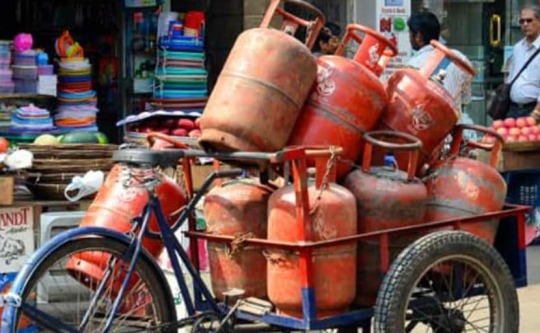
LPG Price: Currently, the government subsidises 12 cylinders of 14.2 KG each per household in a yearLPG Cylinder Price: From this month, LPG prices have been increased marginally in metros - a second consecutive month of upward revision which comes after three straight cuts. According to Indian Oil Corporation's website, the price of non-subsidised LPG refills was increased by one rupee to Rs 594 per 14.2 kilograms from July 1. Data shows LPG rates have steadied in the national capital over the past two months, after steep reductions from Rs 858.50 per cylinder (14.2 kilograms) in February. The prices of LPG or cooking gas vary in different states due to local taxes. Retailers such as state-run Indian Oil Corporation - which supplies the cooking gas under brand Indane - review the rates from time to time based on international crude oil rates. Currently, Indiane LPG consumers in Delhi and Mumbai have to shell out Rs 594 for each non-subsidised refill of 14.2 per kilograms. Current Indane Non-Subsidised LPG Rates CityPrice In Rupees Per Cylinder (14.2 Kilograms)JulyJuneDelhi594.00593.00Kolkata620.50616.00Mumbai594.00590.50Chennai610.50606.50(Source: iocl.com)Indian Oil provides information on latest rates in other cities on its website. (LPG rates were lowered for three straight months prior to two marginal hikes since June 1) Currently, the government subsidises 12 cylinders of 14.2 kilograms each per household in a year. Read the full article
#1augustnews#247news#5g570newspaper#660closings#702news#8paradesouth#911fox#abc90seconds#adamuzialkodaily#atoactivitystatement#atobenchmarks#atocodes#atocontact#atoportal#atoportaltaxreturn#attnews#bbnews#bbcnews#bbcpresenters#bigcrossword#bigmoney#bigwxiaomi#bloomberg8001zürich#bmbargainsnews#business#business0balancetransfer#business0062#business0062conestoga#business02#business0450pastpapers
0 notes
Text
UK-China ties freeze with debate over Huawei, Hong Kong - business news
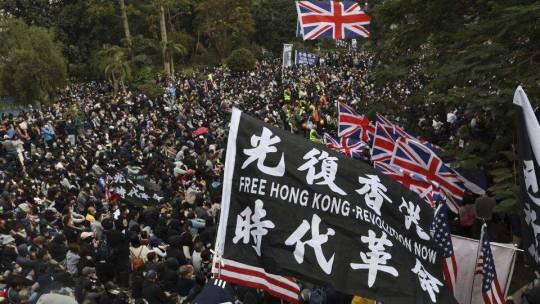
Only five years ago, then-British Prime Minister David Cameron was celebrating a “golden era” in UK-China relations, bonding with President Xi Jinping over a pint of beer at the pub and signing off on trade deals worth billions.Those friendly scenes now seem like a distant memory.Hostile rhetoric has ratcheted up in recent days over Beijing’s new national security law for Hong Kong. Britain’s decision to offer refuge to millions in the former colony was met with a stern telling-off by China. And Chinese officials have threatened “consequences” if Britain treats it as a “hostile country” and decides to cut Chinese technology giant Huawei out of its critical telecoms infrastructure amid growing unease over security risks.All that is pointing to a much tougher stance against China, with a growing number in Prime Minister Boris Johnson’s Conservative Party taking a long, hard look at Britain’s Chinese ties. Many are saying Britain has been far too complacent and naive in thinking it could reap economic benefits from the relationship without political consequences.“It’s not about wanting to cut ties with China. It’s that China is itself becoming a very unreliable and rather dangerous partner,” said lawmaker and former Conservative leader Iain Duncan Smith. Read the full article
#1augustnews#247news#5g570newspaper#660closings#702news#8paradesouth#911fox#abc90seconds#adamuzialkodaily#atoactivitystatement#atobenchmarks#atocodes#atocontact#atoportal#atoportaltaxreturn#attnews#bbnews#bbcnews#bbcpresenters#bigcrossword#bigmoney#bigwxiaomi#bloomberg8001zürich#bmbargainsnews#business#business0balancetransfer#business0062#business0062conestoga#business02#business0450pastpapers
0 notes
Text
Valentina Sampaio Is the First Transgender Model for Sports Illustrated

Valentina Sampaio made history on Friday, becoming the first transgender woman to be featured in the Sports Illustrated swimsuit issue, the magazine said.In a personal essay on the magazine’s website, Ms. Sampaio, a 23-year-old Brazilian model, said she was honored to be in the publication.“The team at SI has created yet another groundbreaking issue by bringing together a diverse set of multitalented, beautiful women in a creative and dignified way,” she wrote.While Ms. Sampaio’s inclusion in this year’s swimsuit edition has earned headlines, it’s hardly a first for her: Last year, she became Victoria Secret’s first openly transgender model and was hired for catalog work for VS Pink, the company’s athletic line. In 2017, Ms. Sampaio was also the first transgender model to grace the cover of a Vogue edition.In recent years, the Sports Illustrated swimsuit issue has had a number of breakthrough moments.The magazine, which debuted in 1964, put Ashley Graham, its first size 16 model, on the cover in 2016. Last year, it featured the Somali-American model Halima Aden, who was the first woman to wear a hijab and burkini in the magazine.MJ Day, the editor of Sports Illustrated Swimsuit, said in a statement that Ms. Sampaio had been on her radar for some time and that she had noticed her passion for activism, calling the Sports Illustrated rookie a “true pioneer for the LGBT+ community.”Ms. Sampaio at a Sao Paulo Fashion Week show in 2017.Credit...Nelson Read the full article
#1augustnews#247news#5g570newspaper#660closings#702news#8paradesouth#911fox#abc90seconds#adamuzialkodaily#atoactivitystatement#atobenchmarks#atocodes#atocontact#atoportal#atoportaltaxreturn#attnews#bbnews#bbcnews#bbcpresenters#bigcrossword#bigmoney#bigwxiaomi#bloomberg8001zürich#bmbargainsnews#business#business0balancetransfer#business0062#business0062conestoga#business02#business0450pastpapers
0 notes
Text
Awkward Timing, but the Financial Ideas Are Still Sound
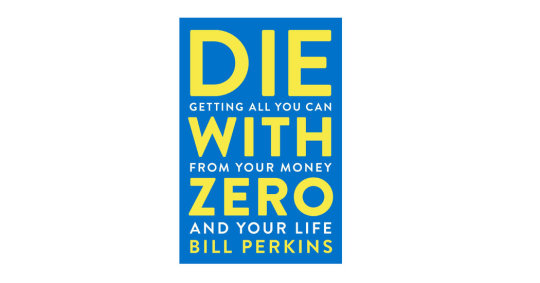
A book with a provocative title says you should have two equal goals when it comes to investing: Get all you can from both your money and your life. Read the full article
#1augustnews#247news#5g570newspaper#660closings#702news#8paradesouth#911fox#abc90seconds#adamuzialkodaily#atoactivitystatement#atobenchmarks#atocodes#atocontact#atoportal#atoportaltaxreturn#attnews#awkward#bbnews#bbcnews#bbcpresenters#bigcrossword#bigmoney#bigwxiaomi#bloomberg8001zürich#bmbargainsnews#business#business0balancetransfer#business0062#business0062conestoga#business02
0 notes
Text
Local Finances Are Troubled, but Fund Investors May Still Profit

Just counting the effects of the federal tax exemption, if you’re in the 24 percent federal tax bracket, the 1.4 percent current yield on the Vanguard Intermediate-Term Tax-Exempt fund is equivalent to a yield of 1.84 percent in a taxable bond fund (assuming, of course, that neither is held in a tax-sheltered account). For investors in the 35 percent federal tax bracket, the yield is the equivalent to a taxable yield of 2.2 percent The average current yield for core bond funds (whose income is taxable) is 1.4 percent.If that yield advantage appeals, it bears repeating that the coming months may be rocky.Mr. Hayes cautioned that even with a reopening of the economy, municipal revenues will “only be at a percentage of what they were pre-Covid.” Even if a vaccine arrives, people may not spend as much, rely on public transportation with the same gusto, or drive or fly as much, or flock to stadiums, arenas and convention centers.Moreover, some states and cities that issued high volumes of bonds already had severe budget problems before the crisis: Illinois and New Jersey had many bonds rated BBB, the lowest rung of investment grade before the coronavirus. These and other states may find it harder to dig out of this recession. Updated July 7, 2020 Is the coronavirus airborne? The coronavirus can stay aloft for hours in tiny droplets in stagnant air, infecting people as they inhale, mounting scientific evidence suggests. Read the full article
#1augustnews#247news#5g570newspaper#660closings#702news#8paradesouth#911fox#abc90seconds#adamuzialkodaily#atoactivitystatement#atobenchmarks#atocodes#atocontact#atoportal#atoportaltaxreturn#attnews#bbnews#bbcnews#bbcpresenters#bigcrossword#bigmoney#bigwxiaomi#bloomberg8001zürich#bmbargainsnews#business#business0balancetransfer#business0062#business0062conestoga#business02#business0450pastpapers
0 notes
Text
Investors Posted Returns So Great They Seemed Wrong

Returns on some types of mutual funds have been so lofty they look like typos.Small-capitalization growth funds rose an average of nearly 54 percent in the second quarter, for example, making up for big losses in the market downturn of February and March.Here is how three of the top funds from several of the better-performing sectors of the market managed to get eye-popping returns in the three months through June.Aperture Discover EquityBrad D. McGill, manager of the Aperture Discover Equity Fund, runs one of those small-cap growth funds. The returns were remarkable: 59.9 percent in the second quarter.Mr. McGill not only buys small-cap stocks — among the stock market’s jumpiest fare — but he also concentrates his fund’s portfolio, holding only 23 stocks. That dual approach can amplify ups and downs.“There will be volatility along the way, but we’re thinking over the longer term,” he said. The fund opened in December, but Mr. McGill said he’s aiming to hold investments for two to four years.Lately, consumer-oriented companies have done well for him, especially those benefiting from lifestyle changes forced by the coronavirus pandemic, Mr. McGill said.Take Yeti, a maker of expensive coolers and drink ware. It was a sought-after brand among outdoor enthusiasts before the virus arrived, he said. Now, with concerns about crowds, people are spending more time in the wild. That should benefit Yeti, he said.In addition, the company has a trait Mr. Read the full article
#1augustnews#247news#5g570newspaper#660closings#702news#8paradesouth#911fox#abc90seconds#adamuzialkodaily#atoactivitystatement#atobenchmarks#atocodes#atocontact#atoportal#atoportaltaxreturn#attnews#bbnews#bbcnews#bbcpresenters#bigcrossword#bigmoney#bigwxiaomi#bloomberg8001zürich#bmbargainsnews#business#business0balancetransfer#business0062#business0062conestoga#business02#business0450pastpapers
0 notes
Text
S&P BSE Sensex NSE Nifty LIVE Sensex Nifty Set To Open Higher Asian Stocks Under Pressure COVID-19

Domestic stock markets started Wednesday's session on a mixed note amid cautious gains in Asian peers. The S&P BSE Sensex opened 36.58 points lower at 30,159.59, whereas the broader NSE Nifty 50 benchmark started the day at 8,889.15, up 10.05 points from the previous close, a day after the markets rebounded to break a three-day decline. Losses in automobile stocks offset gains in financial services and consumer goods shares.Equities elsewhere in Asia traded listless following overnight declines in the US markets, after economic indicators pointed to more signs of recession. MSCI's broadest index of Asia Pacific shares outside Japan was last seen trading 0.07 per cent lower. Japan's Nikkei 225 benchmark was up 0.74 per cent and South Korea's KOSPI index up 0.30 per cent at the time, whereas China's Shanghai Composite and Hong Kong's Hang Seng indices were down 0.36 per cent and 0.21 per cent respectively.The E-Mini S&P 500 futures were up 0.53 per cent in early Asian trade, indicating a positive opening for the US markets on Wednesday.On Tuesday, the S&P 500, the Dow Jones Industrial Average and the Nasdaq Composite indices had ended down 1.05 per cent, 1.59 per cent and 0.54 per cent respectively.Data showed US homebuilding dropped by the most on record last month, fuelling fears the coronavirus pandemic will lead to the deepest economic contraction in the second quarter since the Great Depression.Back home, the Sensex had ended 167.19 points - or 0.56 per cent - higher at 30,196.17 on Tuesday, and the Nifty settled at 8,879.10, up 55.85 points - or 0.63 per cent - from the previous close. Read the full article
#1augustnews#247news#5g570newspaper#660closings#702news#8paradesouth#911fox#abc90seconds#adamuzialkodaily#Asian#atoactivitystatement#atobenchmarks#atocodes#atocontact#atoportal#atoportaltaxreturn#attnews#bbnews#bbcnews#bbcpresenters#bigcrossword#bigmoney#bigwxiaomi#bloomberg8001zürich#bmbargainsnews#BSE#business#business0balancetransfer#business0062#business0062conestoga
0 notes
Text
Airtel Posts Rs 5,237 Crore Loss In March Quarter On Spectrum Charges
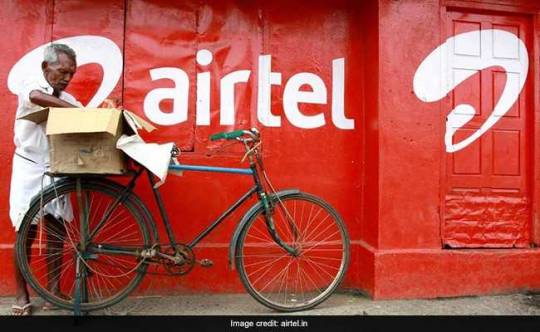
Bharti Airtel said it set aside Rs 5,642 crore for one-time spectrum charges in Q4Bharti Airtel reported a net loss of Rs 5,237 crore for the quarter ended March, due to one-time spectrum charges. The telecom major had posted a net profit of Rs 107.2 crore for the corresponding period a year ago. In a regulatory filing late on Monday, Bharti Airtel, the country's third largest telecom operator by subscribers, said its revenue from operations came in at Rs 23,722.7 crore in the fourth quarter of financial year 2019-20, up 15.15 per cent compared to the year-ago period.Bharti Airtel said its ARPU or average revenue per user was at Rs 154 in the quarter ended March 31, as against Rs 123 in the fourth quarter of 2018-19.The telecom service provider set aside Rs 5,642 crore for one-time spectrum charges in the quarter, it said."These are unprecedented times for everyone across the world as we battle the impact of COVID-19 and its consequent impact on livelihoods," said Gopal Vittal, managing director and CEO, India and South Asia, Bharti Airtel.The company said its India mobile business has turned EBIT- or earnings before interest and taxes-positive, and its revenue from mobile services in the country rose 21.8 per cent on a year-on-year basis.For the entire financial year 2019-20, Bharti Airtel reported a net loss of Rs 32,183.2 crore, in contrast to a net profit of Rs 409.5 crore for the previous year.Bharti Airtel shares had ended 2.88 per cent lower at Rs 538.15 apiece on the BSE, in line with a 3.44 per cent fall in the benchmark S&P BSE Sensex index, ahead of the earnings announcement by the company. Read the full article
#1augustnews#247news#5g570newspaper#660closings#702news#8paradesouth#911fox#abc90seconds#adamuzialkodaily#Airtel#atoactivitystatement#atobenchmarks#atocodes#atocontact#atoportal#atoportaltaxreturn#attnews#bbnews#bbcnews#bbcpresenters#bigcrossword#bigmoney#bigwxiaomi#bloomberg8001zürich#bmbargainsnews#business#business0balancetransfer#business0062#business0062conestoga#business02
0 notes
Text
When Sheltering in Place Puts Your Tax Strategy at Risk

Lockdowns have disrupted the lives of millions of Americans since March, when states began issuing shelter-in-place orders. For some people, a key part of their residency for tax purposes — their domicile status — may have shifted in that time for a number of reasons: They are now working from home, they’ve fled a hot spot or they thought they could ride out the pandemic in a vacation house.These unplanned geographic dislocations could result in unforeseen tax bills for those who are not diligent in keeping records. Domicile jurisdiction is typically aimed at wealthy taxpayers who have multiple homes, but a wider swath of people could now be affected. Doctors and nurses who headed to New York to help, for example, could receive New York City and New York State tax bills.Advisers say taxpayers facing domicile questions need to keep detailed records to explain where they lived, for how long and why. They will also have to match up their records with state and local quarantine orders.“People are going to need to be very precise about their own activities but also know what the states have done,” said Jordan Sprechman, head of U.S. wealth advisory for JPMorgan’s private bank.Yet three months into the pandemic, guidance from states on how they are going to collect tax revenue from part-time residents is inconsistent. Some have been proactive in offering direction, while others have remained quiet, leaving taxpayers in limbo.Establishing residency is not an easy process in normal times, but it’s even more difficult now, with so much uncertainty. Here are three tax areas that you should consider during the pandemic.
Your Home
Counting days has a long and often contested history for tax purposes. Many states, including New York and Maryland, have set a threshold of 183 days, or half the year, to determine residency.There are two legal concepts to understand: domicile, which is your primary home, and residence, which is a statutory test for tax purposes, said Marc J. Bloostein, partner at the law firm Ropes & Gray.People who want to avoid one state’s income or estate tax usually work to establish residency in other states like Florida, which has no income or estate tax. But Florida residents who are unable to leave their pied-à-terre in Manhattan or summer home in Southampton may be at risk of losing their residency status.New York State has not issued guidance on whether it will count the days in quarantine toward its state residency. Visitors are allowed to stay in New York if they are sick, but it’s less clear what it means if they are stuck in the state under shelter-in-place orders.“People are sure there are going to be exceptions, but we need to be very cautious,” said Ani C. Hovanessian, chair of the New York Tax and Wealth Planning Group at Venable, a law firm.“Even though we’re in a pandemic and unprecedented times, these states are going to need tax revenue to make up for all the public policy and aid decisions they’re making now,” she added.Other states approach the question of residency differently. Massachusetts, for example, has a domicile rule with no day count: If you consider the state your domicile, then you are a resident for tax purposes, Mr. Bloostein said.For foreign nationals who are stuck in the United States because of travel restrictions, there is some direction on day count.In regular times, the federal formula that calculates the number of days — known as the substantial presence test — considers time spent in the United States over three years. Staying too long can mean the person could be deemed a U.S. resident for tax purposes and be subject to the country’s worldwide taxing authority.The Internal Revenue Service has said the days will not count if a visitor is unable to leave the country. The exclusion extends for 60 days, starting on or after Feb. 1. But if the pandemic continues into the summer and foreign nationals cannot return to home, their days could be counted under the substantial presence test, said Aaron Schumacher, a partner at Withersworldwide, an international law firm.
Your Office
Many professionals commute to another state for work. Working from home during the pandemic has raised the question of which state then gets to tax that income.The test is necessity versus convenience. If you simply don’t want to commute to the office, working from home is for your convenience and the state where your office is continues to collect its income tax. But if you cannot go to the office in another state because of a stay-at-home order, shouldn’t the state where you are working from home collect that tax?The answer could set up a battle between states.Ms. Hovanessian normally works in Midtown Manhattan, but she is telecommuting at her home in northern New Jersey because of lockdown orders. New Jersey has said it will not impose a tax on the income of people who usually work in another state but are now working from home.But this is not broadly the case. New York has not issued guidance on what it might do, said Mr. Sprechman of JPMorgan. He added that New York could continue to tax residents of other states who normally worked in New York but were now working from home. Likewise, the city could continue to tax residents of New York State who typically work in Manhattan. That could get messy.“New York could tax you for the days you continued to work from home as a matter of convenience,” he said. “You’re relying on official sources for that information telling you when you can go back to work.”States often give a credit for income tax exacted by another state, but what if there isn’t a state income tax to credit? Say North Carolina assesses an income tax, but your home state is Florida, where there is no income tax. The taxpayer is out of luck, said Lisa R. Featherngill, managing director and head of legacy and wealth planning at Abbot Downing.The situation is worse still for doctors, nurses and other emergency personnel from other parts of the country who went to New York to help. Their income could be taxed at higher rates.“If they’re earning income and not just volunteering, they’re earning New York income and their income will be taxed by New York,” Ms. Hovanessian said. “This is where the taxman looks more like the Grim Reaper.”The pandemic is not just creating tax uncertainty in the United States. It becomes more complicated — and perhaps costly — with international companies that have directors living in different countries. The United States taxes companies based on where they were formed, but other countries use a test called mind and management, which essentially means where the decisions are being made.“Typically, you manage for where those meetings take place,” Mr. Schumacher said. “The question now is, where are those decisions being made when all those directors are at their desks at home?”Having a tax treaty in place can change how taxation works, but absent one, there’s a lot of uncertainty, he said.
Your Estate
There may be a document no more refined than the estate plan of affluent people. Trusts are created and documents are drawn up for a particular state in which they spend most of their time.If they die outside their home state, the estate must be able to demonstrate where the home or domicile is.“In the estate tax context, it means the place you always intended to go back to, the place you consider home,” Mr. Sprechman said. “If you happen to be living in your pied-à-terre and you happen to die in New York, if all evidence indicates you were a Florida resident, New York will not tax you as a New York resident. But it may include the value of the New York apartment for taxes.”Another issue, Ms. Featherngill said, is inheritance taxes, which exist in states like Connecticut.But these, like all taxes, rest on the state’s being able to argue its case successfully. The only protection against that is meticulous record-keeping to prove where you were when the pandemic struck. Read the full article
#1augustnews#247news#5g570newspaper#660closings#702news#8paradesouth#911fox#abc90seconds#adamuzialkodaily#atoactivitystatement#atobenchmarks#atocodes#atocontact#atoportal#atoportaltaxreturn#attnews#bbnews#bbcnews#bbcpresenters#bigcrossword#bigmoney#bigwxiaomi#bloomberg8001zürich#bmbargainsnews#business#business0balancetransfer#business0062#business0062conestoga#business02#business0450pastpapers
0 notes
Text
Government Projects Fourth Consecutive Year Of Record Food Grain Output

The country is estimated to achieve an all-time high food grains production of 295.67 million tonnes in 2019-20 crop year, the fourth consecutive year of record production, buoyed by good rains, the Agriculture Ministry's latest data released on Friday said.According to the data, the estimated output of food grains this year is up 3.67 per cent over the year-ago period and has even crossed its target of 291.10 million tonnes, which it had set before the beginning of the 2019-20 sowing season.Total food grains production includes crops grown during both kharif (summer) and rabi (winter) seasons. At present, harvesting of rabi crops is in the final stages amid the COVID-19 crisis.This is the fourth consecutive year-on-year higher output of food grain since 2016-17 crop year (July-June). The previous record was 285.21 million tonnes during the 2018-19 crop year."The cumulative rainfall in the country during the monsoon season (June to September, 2019) had been 10 per cent higher than the Long Period Average (LPA).Accordingly, the production of most of the crops for the agricultural year 2019-20 has been estimated higher than their normal production," the ministry said releasing the third estimate of production.Among all crops, the output of wheat -- the main rabi crop -- is estimated at an all-time high level of 107.18 million tonnes in 2019-20, up from 103.60 million tonnes previous year. Harvesting of wheat crop is in the final stage of completion.Similarly, the output of rice -- the main kharif crop -- is estimated to be a record 117.94 million tonnes this year, higher from 116.48 million tonnes last year.At the same time, the production of coarse cereals is estimated to be a record 47.54 million tonnes as against 43.06 million tonnes in the said period.Production of maize is pegged at a record 28.98 million tonnes this year, up from 27.72 million tonnes in the 2018-19 crop year, but barley output is estimated to lower at 1.59 million tonnes as against 1.63 million tonnes in the said period.In case of pulses, total production is estimated to increase to 23.01 million tonnes this year from 22.08 million tonnes last year. Of which, tur production is pegged at 3.75 million tonnes and chana at 10.90 million tonne for this year.Food grains basket comprises wheat, rice, coarse cereals and pulses.As far as oilseeds were concerned, total production is estimated to increase marginally to 33.50 million tonnes in the 2019-20 crop year from 31.52 million tonnes last year.Among cash crops, the country would see an all-time high production of cotton at 36.04 million bales (of 170 kg each) in the current year, much higher than 28.04 million bales last year. The previous record was 35.90 million bales in 2013-14 crop year.Meanwhile, sugarcane production is estimated to decline to 358.13 million tonnes this year from 405.4 million tonnes last year due to fall in production mainly in Maharashtra and Karnataka.The output of jute is estimated flat at 9.43 million bales (of 180 kg) this year as against 9.49 million bales in 2018-19 crop year, while mesta output is estimated to increase to 4.89 million bales from 3.23 million tonnes in the said period.Although the third estimate might just be revised after harvest of rabi crops, the final output figures may not be less than what is estimated right now.The Agricultural Ministry releases four advance estimates of production followed by a final estimate. In fact, the fourth advance estimates are considered as good as the final estimates. Read the full article
#1augustnews#247news#5g570newspaper#660closings#702news#8paradesouth#911fox#abc90seconds#adamuzialkodaily#atoactivitystatement#atobenchmarks#atocodes#atocontact#atoportal#atoportaltaxreturn#attnews#bbnews#bbcnews#bbcpresenters#bigcrossword#bigmoney#bigwxiaomi#bloomberg8001zürich#bmbargainsnews#business#business0balancetransfer#business0062#business0062conestoga#business02#business0450pastpapers
0 notes
Text
Moody's Sees India's Economic Growth At 'Zero' In Current Financial Year Amid COVID-19
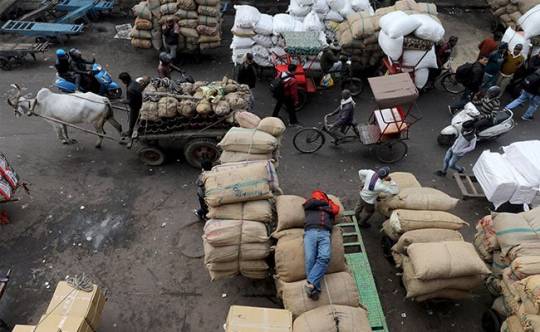
Moody's Investors Service on Friday said it estimated India's GDP growth to hit 'zero' in FY21 and pointed to a wide fiscal deficit, high government debt, weak social and physical infrastructure, and a fragile financial sector.The quality of India's economic growth has declined in recent years, demonstrated by financial stress among rural households, relatively low productivity and weak job creation, the agency said.In its forecast for the current financial year, the agency estimated India's gross domestic product (GDP) growth at zero, meaning the country's economic growth will remain flat this financial year, and the same is seen accelerating to 6.6 per cent in the next financial year (FY22).In its credit opinion which comes following the change in the forecast, Moody's warned that the COVID-19 "shock will exacerbate an already material slowdown in economic growth, which has significantly reduced prospects for durable fiscal consolidation".Analysts across the board have been certain about the heavy economic toll that the pandemic will take on the country.Moody's local arm ICRA had earlier pegged for a contraction of up to 2 per cent in the economic growth as a result of the crisis, which has seen the country being put under a lockdown for nearly two months to arrest the spread of virus.Late last month, Moody's had slashed its calendar year 2020 GDP growth forecast to 0.2 per cent.Its negative outlook on the sovereign rating, which was revised last in November 2019 from 'stable', reflects increasing risks that economic growth will remain significantly lower than in the past, it said, adding that this takes into account the deep shock triggered by the virus outbreak.Meanwhile, India's credit strengths include a large and diverse economy, favourable demographic potential and a stable domestic financing base to fund the government debt, it noted.In March, the government had announced a relief package worth Rs 1.7 lakh crore, and there are speculations of another follow-up package in the offing.These measures will reduce the depth and duration of India's growth slowdown, but there is a probability of an 'entrenched weakening' on prolonged financial stress among rural households, weak job creation and a credit crunch among non-bank financial institutions, it said.Reform prospects, which can take care of some of the concerns with the Indian economy, have diminished, the agency said.It further warned that a downgrade in the rating could happen if the fiscal metrics weakened materially, and made it clear that a negative outlook indicates that an upgrade in the rating is unlikely in the near term.However, the outlook can be changed to stable" if the fiscal metrics stabilise, it added. Read the full article
#1augustnews#247news#5g570newspaper#660closings#702news#8paradesouth#911fox#abc90seconds#adamuzialkodaily#atoactivitystatement#atobenchmarks#atocodes#atocontact#atoportal#atoportaltaxreturn#attnews#bbnews#bbcnews#bbcpresenters#bigcrossword#bigmoney#bigwxiaomi#bloomberg8001zürich#bmbargainsnews#business#business0balancetransfer#business0062#business0062conestoga#business02#business0450pastpapers
0 notes
Text
Leaving Lockdown, Entering Recession: Strike in Spain Shows Workers’ Fears

BARCELONA, Spain — This week’s reopening of Nissan’s main assembly plant in Spain was meant to be a moment of celebration for an industry that is a pillar of the Spanish economy.It proved very short-lived. The car factory was forced to close on Wednesday — just over two days after restarting — because of a strike called by labor unions to demand that the Japanese company commit to maintaining its presence in Spain.In a country that has been under lockdown since mid-March, the strike is the most visible labor conflict in Spain. Despite social-distancing rules, the authorities allowed up to 10 workers at a time to picket outside a Nissan plant on the outskirts of Barcelona.Labor unions in Europe have recently voiced concerns about the safety of employees who have been returning to work. But the strike at Nissan highlights what may be the next major concern of organized labor: protecting jobs in a post-pandemic economy.The coronavirus has brought about a recession that is expected to be the worst ever in the European Union, one that will most likely push companies to close down struggling factories.Automakers in particular are believed to have excess capacity, as demand for new cars has slipped in recent years. About a fifth of carmaking capacity worldwide is not being used.The Nissan strike “can be seen as an example of things to come,” said Anna Ginès, the director of the Institute for Labor Studies at Esade, a Spanish university.She said she expected more labor conflict, particularly as some companies sought to turn temporary furloughs and salary reductions into permanent cuts, “even before they are able to see exactly the coronavirus impact on their business.”Nissan has about 4,000 employees in Spain, about three-quarters of whom work in the Barcelona area, mostly in its Zona Franca assembly plant, which makes the NV200 van and pickups. Labor unions, which are trying to pressure the company to protect jobs, decided to strike at a smaller Nissan facility in Montcada, outside Barcelona, that supplies doors and hoods to the Zona Franca plant.Workers at the smaller shop went on strike on Monday, creating a bottleneck in Nissan’s supply chain that forced the Zona Franca assembly line to grind to a halt after its morning shift on Wednesday.By avoiding a broader walkout, the unions ensured that Nissan itself would stop production, rather than having most workers forfeit their wages by going on strike.Javier Hernández, the lead representative of the U.G.T., or General Workers’ Union, at the Zona Franca factory, said he had never seen a strike organized in that way, targeting a link in the supply chain rather than the main plant. He argued that it was an innovative way of adapting to a lockdown that has barred workers from holding mass street demonstrations.“I guess unique circumstances like this coronavirus require an unusual response,” he said.Automakers around the world, like other industries, have been crushed by the lockdowns, which have shuttered factories as well as auto dealerships. The Spanish Automobile and Truck Manufacturers’ Association, known as ANFAC, called on the government to provide immediate relief to the car industry, which accounts for 10 percent of Spain’s economy. Without such help, “the automotive sector in Spain is seriously endangered,” José Vicente de los Mozos, the president of the association, said in a statement.ANFAC said it was expecting vehicle sales to plunge this year to levels last seen after the 2008 financial crisis, which forced Spain to negotiate a European banking bailout.After that bailout, the automotive sector was a critical part of an export-led economic recovery in Spain. Car factories benefited from falling labor costs compared with Germany and other European production centers, which helped persuade Ford and some other carmakers to make fresh investments in Spain.However, Nissan was not among them. Instead, the Japanese company has steadily reduced its footprint in Spain as it sank into a management crisis, including the 2018 ouster of its chairman, Carlos Ghosn. Nissan’s annual production in Spain fell to about 50,000 vehicles, from 200,000 a decade earlier.Nissan would not comment on “rumors and speculations about the future of the plants.” The company, which posted a quarterly loss of 26 billion yen, or about $244 million, in February, is set to unveil a new global operational plan on May 28.Local lawmakers have recently pledged to fight for the autoworkers’ jobs. But Javier Adalid, a representative for the Comisiones Obreras union, argued that Spanish officials had limited influence over foreign carmakers.“We have a huge industry that is controlled by outsiders,” Mr. Adalid said. “Executives in Tokyo will be more responsive to the pleas coming from within Japan rather than from here.”Ford, PSA Peugeot Citroën, Mercedes-Benz and Volkswagen also have factories in Spain, some of which have performed strongly. Volkswagen recently reopened its main Spanish plant outside Barcelona, which makes vehicles under its subsidiary brand Seat, and last year lifted production there to the highest level in two decades.This is a fragile time for Spanish labor unions, which have gradually lost membership. Their collective bargaining position was also reduced in the aftermath of the financial crisis, under a 2012 law that gave companies more leeway to fire workers. Ms. Ginès, the professor of labor law, said her research showed that Spanish unions were now among the weakest in Europe.As he stood on the picket line, Mr. Adalid, the union official, said he was ready to fight for a Nissan job he had held for 20 years. He wore a T-shirt with the slogan “Never forget” and illustrations of a cassette tape, a VHS video cartridge and a floppy disk.The job uncertainties coming out of the lockdown “give me a sense of nostalgia,” he said. “We have certainly worked in better times.” Read the full article
#1augustnews#247news#5g570newspaper#660closings#702news#8paradesouth#911fox#abc90seconds#adamuzialkodaily#atoactivitystatement#atobenchmarks#atocodes#atocontact#atoportal#atoportaltaxreturn#attnews#bbnews#bbcnews#bbcpresenters#bigcrossword#bigmoney#bigwxiaomi#bloomberg8001zürich#bmbargainsnews#business#business0balancetransfer#business0062#business0062conestoga#business02#business0450pastpapers
0 notes
Text
Gold Futures Rise To Rs 45,800 Per 10 Grams Mark Amid COVID-19 Crisis

Gold Rate Today: MCX gold futures climbed as much as 0.56% to Rs 45,801/10 gramsGold Price In India: Domestic gold futures rose on Thursday to touch the Rs 45,800 per 10 grams mark despite weakness in global rates. MCX gold futures climbed by as much as Rs 255 per 10 grams - or 0.56 per cent - to Rs 45,801 per 10 grams, compared to their previous close of Rs 45,546 per 10 grams. At 11:37 am, the gold futures contract (delivery on June 5) was up by Rs 184.00 per 10 grams - or 0.40 per cent - at Rs 45,730 per 10 grams. Gold prices are more than 3 per cent off their all-time high of Rs 47,327 per 10 grams registered this month, as the coronavirus (COVID-19) pandemic has boosted its appeal as a safe haven. (Track Gold Prices In India Here)#Gold and #Silver Opening #Rates for 29/04/2020#IBJApic.twitter.com/qygnsajAAQIBJA #StayHomeStaySafe (@IBJA1919) April 29, 2020Gold jewellery prices vary in different parts of India - the second largest consumer of the precious metal - due to factors such as excise duty, state taxes and making charges. In the international market, gold prices edged lower as risk appetite was boosted by positive trial results of an experimental COVID-19 treatment, although the Federal Reserve's decision to keep interest rates near zero kept bullion above the $1,700 per ounce level.Spot gold was last seen trading 0.1 per cent lower at $1,710.21 per ounce.The dollar index - which gauges the greenback's strength against six peers overseas - weakened as much as 0.09 per cent on Wednesday, and was last seen trading flat.Domestic stock markets rose more than 3 per cent tracking Asian peers, where equities touched up to seven-week highs. The S&P BSE Sensex index climbed to as high as 33,778.34, up 1,058.18 points from the previous close, at the strongest level in the first half of the session, and the broader NSE Nifty 50 benchmark touched 9,860.40, having started the day at 9,753.50 compared to its previous close of 9,553.35.Last month, commodity exchanges cut down trading hours, in a shift from the practice of allowing trading till midnight, in the wake of coronavirus pandemic. The trading now begins at 9 am and ends at 5 pm, instead of 11:50 pm earlier.
Gold Price: What Analysts Say On Current Gold Rate
“Today, gold is trading at $1725/oz up by almost 0.7 per cent. The Fed Chairman called for more policy action to support the economy that helped gold's recovery,” said Ravindra Rao, VP-head commodity research at Kotak Securities."After a three steady days, inflows were seen in gold ETF (exchange traded fund) indicating robust investor interest. Improved risk sentiment has however kept a check on the gains. Gold expected to trade in a broad range due to lack of fresh triggers,” he added. Read the full article
#1augustnews#247news#5g570newspaper#660closings#702news#8paradesouth#911fox#abc90seconds#adamuzialkodaily#atoactivitystatement#atobenchmarks#atocodes#atocontact#atoportal#atoportaltaxreturn#attnews#bbnews#bbcnews#bbcpresenters#bigcrossword#bigmoney#bigwxiaomi#bloomberg8001zürich#bmbargainsnews#business#business0balancetransfer#business0062#business0062conestoga#business02#business0450pastpapers
0 notes
Text
S&P BSE Sensex NSE Nifty 50 LIVE Gap Up Opening Likely For Nifty Tracking Global Markets COVID-19
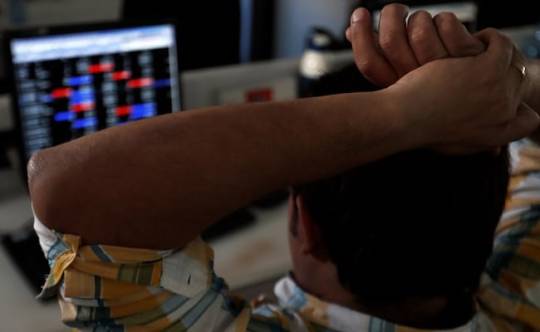
Investors around the globehave been excited by the prospect of a COVID-19 treatmentDomestic stock markets are likely to start the last trading session of the week on a positive note, tracking gains in Asian peers, where equities touched a seven-week high lifted by encouraging early results from a coronavirus (COVID-19) treatment trial. The Singapore Exchange (SGX) Nifty futures - an early indicator of the National Stock Exchange (NSE) Nifty index back home - jumped as much as 202.85 points to touch 9,752.00 ahead of the opening of Indian markets. At 8:00 am, the SGX Nifty futures were up 196.35 points - or 2.06 per cent - at 9,745.50.Equities elsewhere in Asia jumped, with MSCI's broadest index of Asia-Pacific shares excluding Japan rising 0.8 per cent to its highest level recorded since mid-March. Japan's Nikkei 225 benchmark index, returning from a holiday the previous day, jumped 2.5 per cent to a seven-week high.Asian stocks followed strong moves in US markets overnight, where shares rallied after Anthony Fauci, the top US infectious disease official, said Gilead's antiviral remdesivir will become the standard of care for COVID-19 after early results from a trial seemed to show it helped speed recovery. Investors around the globe have been excited by the prospect of a COVID-19 treatment because it may help countries emerge from lockdowns - even though investors' hopes don't seem to take into account regulatory and distribution difficulties should a treatment be found.Moreover, the Federal Reserve policymakers on Wednesday left interest rates near zero and repeated a vow to do what it takes to shore up the economy, saying the ongoing coronavirus pandemic will “weigh heavily” on the near-term outlook and poses “considerable risks” for the medium term.The S&P 500, Dow Jones Industrial Average and Nasdaq Composite indices ended 2.66 per cent, 2.21 per cent and 3.57 per cent higher respectively. US futures, however, gave up early gains to turn flat, indicating a lacklustre start on Thursday.The markets are likely to be volatile in today's session as this is the last day of the April derivatives series. The market participants will also keep an eye on news developments on the Covid-19 front. As of April 30 morning, the number of confirmed COVID-19 cases in the country stands at 31,787 and the death toll is 1,008. During his interaction with chief ministers on April 27, PM Modi reportedly hinted that restrictions may continue in hotspots and containment zones.On Wednesday, the S&P BSE Sensex index had added 605.64 points - up 1.89 per cent from the previous close - to end at 32,720.16 and the broader NSE Nifty 50 benchmark settled at 9,553.35, up 172.45 points (1.84 per cent) from the previous close.The domestic financial markets will remain closed on Friday due to Maharashtra Day. Read the full article
#1augustnews#247news#5g570newspaper#660closings#702news#8paradesouth#911fox#abc90seconds#adamuzialkodaily#atoactivitystatement#atobenchmarks#atocodes#atocontact#atoportal#atoportaltaxreturn#attnews#bbnews#bbcnews#bbcpresenters#bigcrossword#bigmoney#bigwxiaomi#bloomberg8001zürich#bmbargainsnews#BSE#business#business0balancetransfer#business0062#business0062conestoga#business02
0 notes